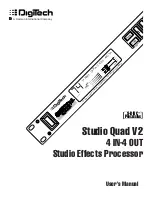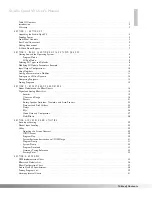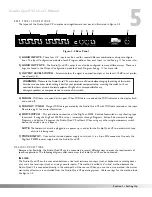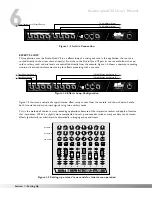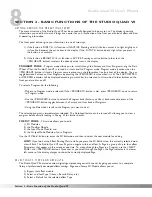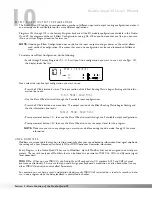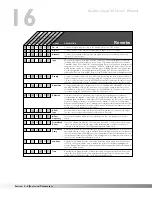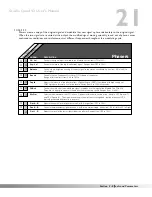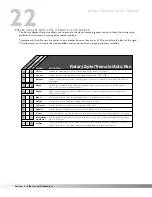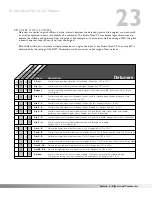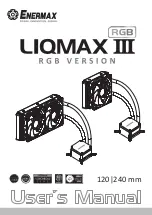
10
EFFECT & INPUT / OUTPUT CONFIGURATIONS
The Studio Quad V2's ability to accommodate a number of different input and output routing configurations makes it
an extremely useful and flexible tool for many different applications.
Programs 101 through 112 in the Factory Program bank are all the FX module configurations available in the Studio
Quad V2. For diagrams of these 12 Effect Configurations, see pg. 38. When you find one that you like, you can save
it to a new User Program location for later use.
NOTE:
Choosing an Effect Configuration does not define the input / output routing schemes or the actual effects
used within the configuration. This means that even one configuration can be used thousands of different
ways.
To select a new Effect Configuration, do the following:
• Scroll through Factory Programs 101 - 112 until you find a configuration you want to use. Let’s use Pgm. 101;
the display looks like this:
Next, select the input/output configuration you want to use:
• Press the FX Edit button 6 times. The input section of the Effect Routing Matrix begins flashing and the infor-
mation line reads:
Input Mode: Quad Mono
• Use the Data Wheel to scroll through the 9 available input configurations.
• Press the FX Edit button one more time. The output section of the Effect Routing Matrix begins flashing and
the the information line reads:
Output Mode: Quad Mono
• Press parameter button <1>, then use the Data Wheel to scroll through the 9 available output configurations.
• Press parameter button <4>, then use the Data Wheel to to set the output level for the program.
NOTE:
Make sure you store any changes you want to save before exiting the edit mode. See pg.13 for more
information.
USING MODIFIERS
Modifiers are unique tools that can be used to dramatically alter your sound based on information from signal amplitude,
the settings of a Low Frequency Oscillator (LFO) or MIDI Continuous Controller information.
Every Program in the Studio Quad V2 has a set of Modifiers. Up to 8 Modifier links can be assigned to control para-
meters. There are three types of Modifiers that can be linked to a parameter: MIDI CCs, LFOs, and Dynamic (signal
level dependent).
MIDI CCs
- When you use MIDI CCs, the Studio Quad V2 responds to CC numbers 0-127 and CHP (channel
pressure or aftertouch). This means that you could assign your keyboard's modulation or pitch bend wheel (or any
other MIDI CC device) to control effect Parameters.
For example, you can have a synth's modulation wheel (usually MIDI CC#1) control the in level of a reverb and cho-
rus in one program while the delay feedback is controlled in another.
USER PRG
Sec
Sec
m
Sec
Cfg: 1 (4,4,4,4)
IN 4
IN 3
IN 2
IN 1
FACTORY PRG
- CHANGED
- CHANGED
MIDI
CHANGED
LEVEL 4
LEVEL 3
LEVEL 2
LEVEL 1
OUT 4
OUT 3
OUT 2
OUT 1
CLIP
FX EDIT PAGE
FX EDIT PAGE
1 2
5 6 7 8 9 10
Off
CHANGED
CHANGED
CHANGED
UTILITY PAGE
UTILITY PAGE
DIGITAL CLIP
DIGITAL CLIP
888
888
888
MODIFIERS
1
2
3
4
CLIP
CLIP
CLIP
CC
CC
CC
CC
S-DISC
™
P
ROCESSING
101
%kHz
m
Sec
%kHz
%kHz
m
%kHz
m
3 4
Section 2 - Basic Function of the Studio Quad V2
Studio Quad V2 User's Manual

